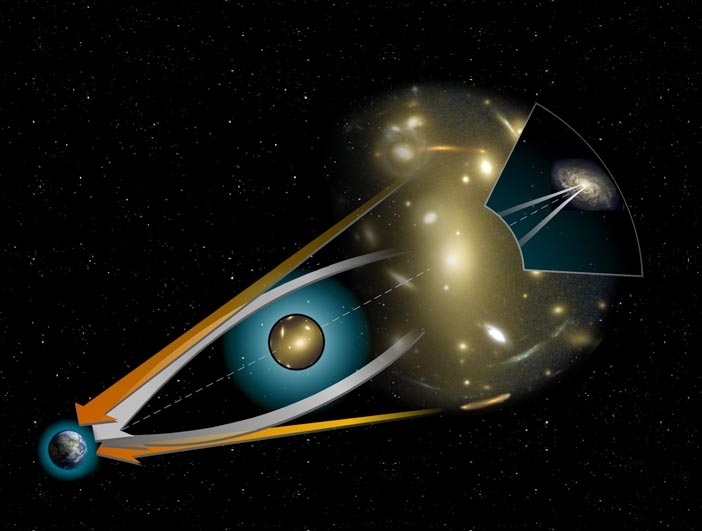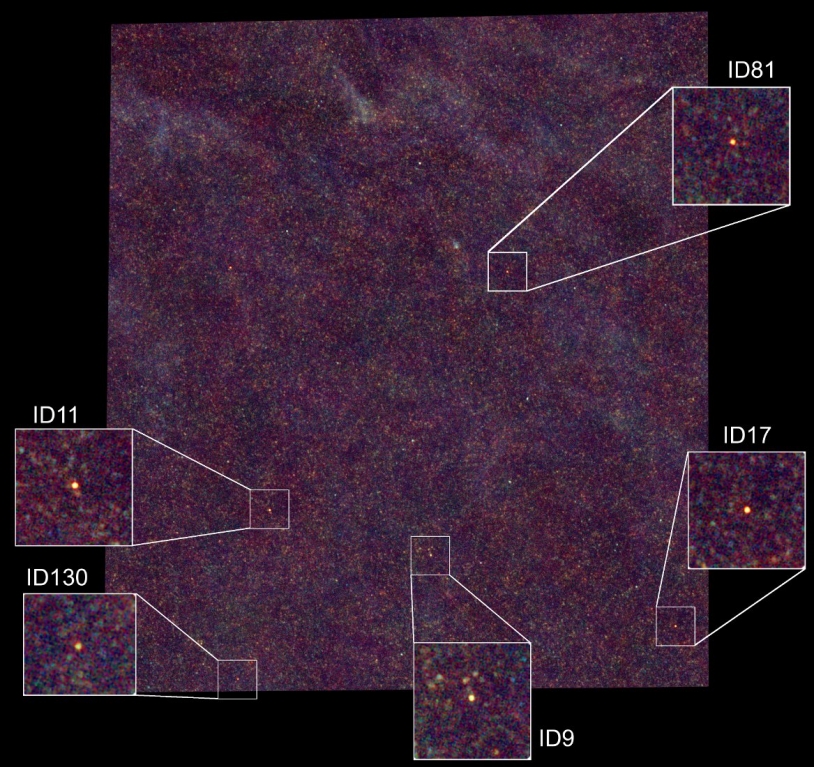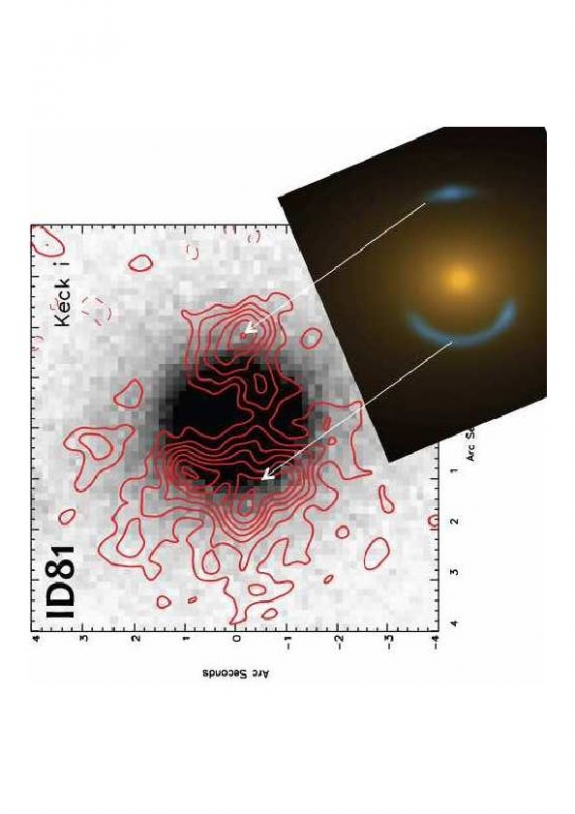4 November 2010
Herschel’s phenomenal view

The phenomenon of gravitational lensing, or the cosmic ‘zoom lens’ effect, is one of the predictions of Einstein’s general theory of relativity: light is “bent” when it passes close to a massive object.
The image of a very distant object is thus amplified, and possibly distorted, if a massive object is located between the source and the observer.
Precise alignment is vital, which makes this phenomenon rare. “Herschel is particularly well suited to observe this effect,” explains Alain Omont of the Institut d’Astrophysique de Paris, “because its cameras are sensitive to the submillimetre radiation from far-distant galaxies.”

The Herschel-ATLAS project, in which French researchers are involved, supported by CNES, uses these cameras to identify very bright sources at submillimetre wavelengths.
It appears that a number of the brightest sources are amplified by gravitational lensing.
Observing candidates in the visible range, using telescopes on the ground, astronomers found galaxies that should not emit radiation at the wavelengths observed by Herschel.
Their conclusion is that these galaxies are acting as gravitational lenses, amplifying other much more distant galaxies.
Scientifically important

Without these lensing effects, such distant and dark galaxies would be undetectable, effectively drowned out by their nearer and brighter counterparts.
All this is great news for scientists: “Observing these distant galaxies is important because it provides vital clues about the processes of galaxy formation and how the universe is structured,” adds Alain Omont. “It also tells us about the distribution and influence of dark matter in the universe.”
And this is just the start. In fact, Herschel has only covered 1/30th of the total survey region and will continue these observations for almost the entire operational life of the telescope, with hundreds more gravitational lenses likely to be discovered.
The next step will be to submit the most interesting objects to the piercing gaze of the future ALMA ground-based interferometer in Chile, which will study them in even closer detail.